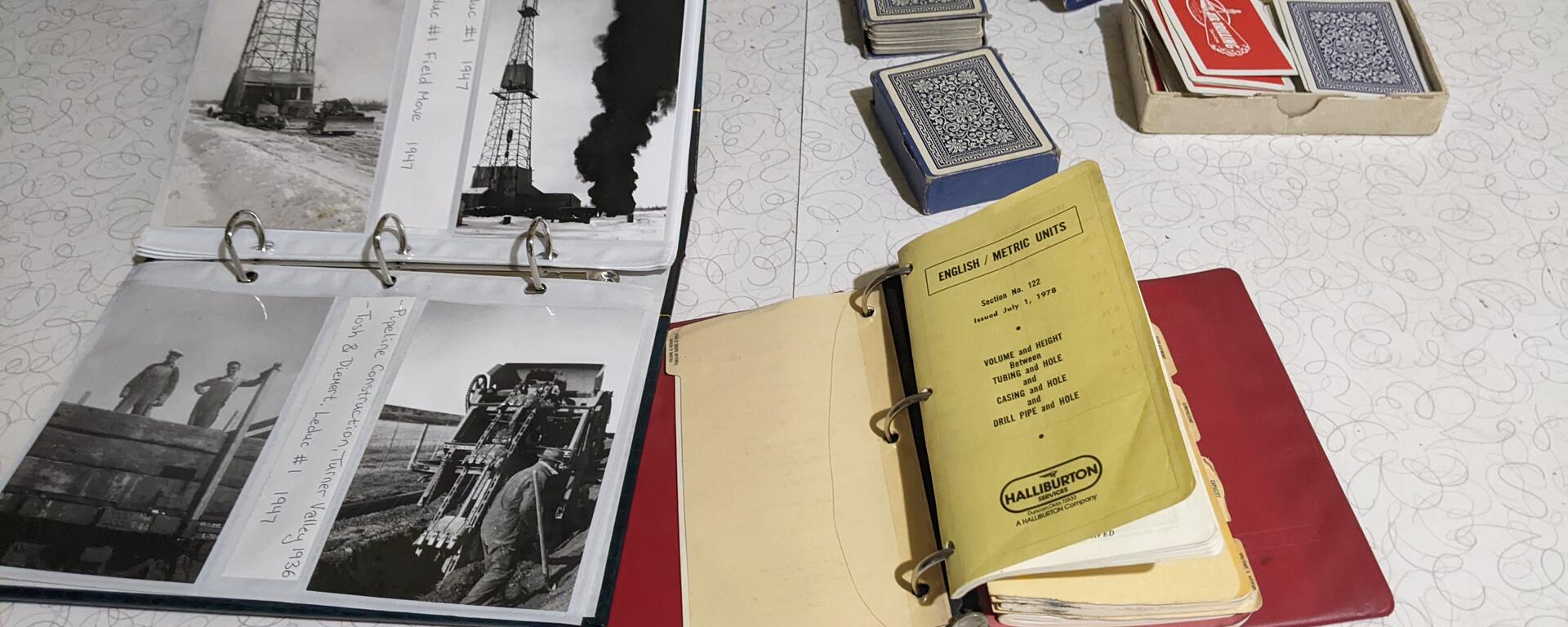First stop: Devon and Leduc!
In Alberta, the `roughneck,' or male oil rig worker, has been a persistent stereotype in historical and contemporary narratives. Our first project for Rethinking Roughnecks reveals the role of women and families in oil exploration and extraction, and proposes to renarrate the story of mid-century oil exploration in Leduc, Alberta, combining archival research, audio and animation, as well as photogrammetry, computational media design and app development in an interactive curated augmented reality (AR) experience available to museum visitors at the Canadian Energy Museum (CEM), as well as to the general public in Canada.
In spring 2022, Energy Stories Lab Co-Directors and two Lab Associates (Straathof, Jafarzadeh) began collaborative discussions with the CEM's Executive Team about how AR storytelling could be used to rethink the presentation of Alberta's energy history. CEM's current exhibit focuses exclusively on the work of male rig workers and executives from Imperial Oil. Our team located women's oral histories in the CEM archive which demonstrate that women were active but invisible participants in the oil economy: hauling water, providing meals, laundry, unpaid secretarial labour, and securing land for Imperial from Leduc County.
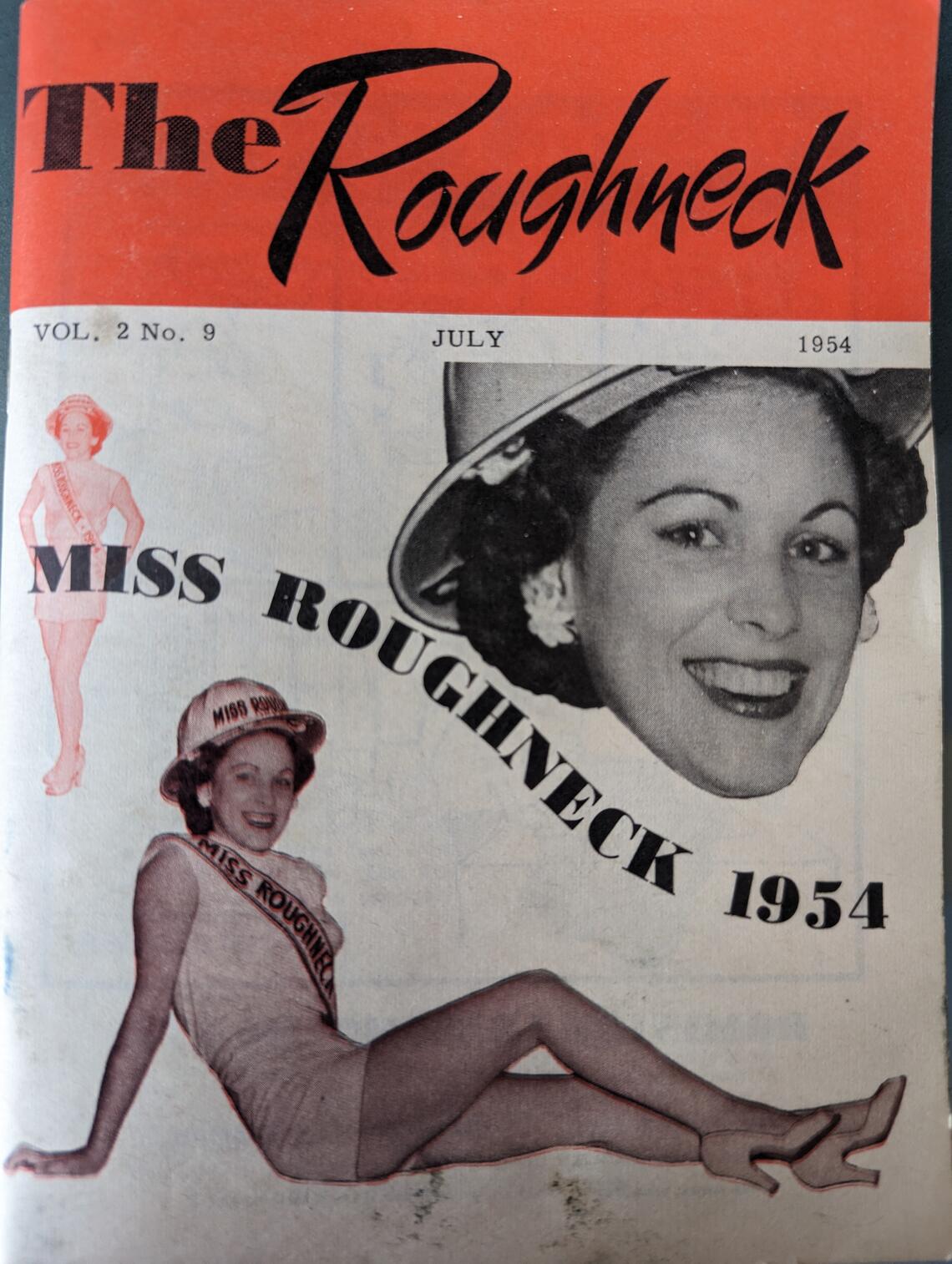
Cover of The Roughneck magazine, July 1954 (Vol.2, No 9), Canadian Energy Museum.
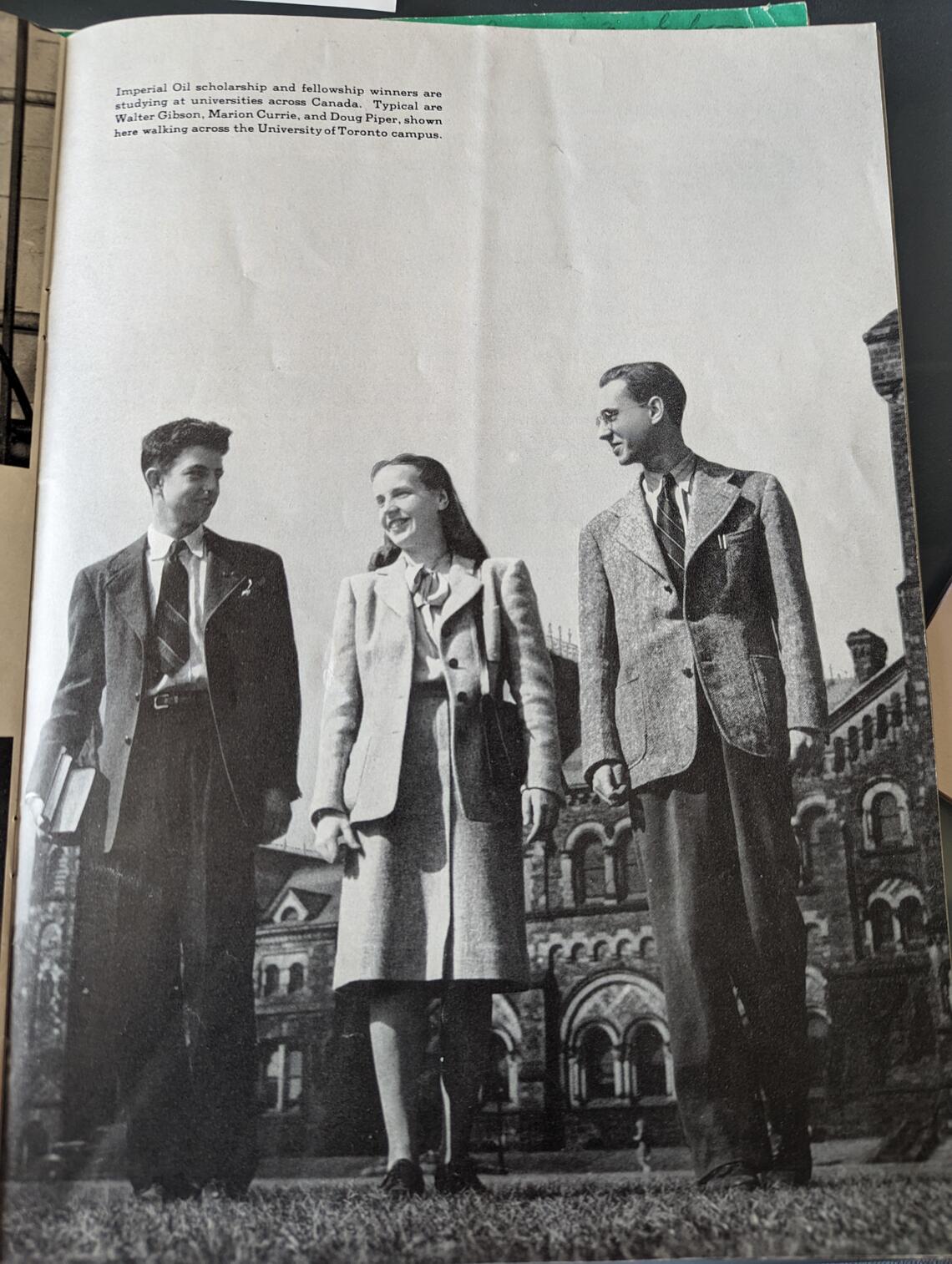
Imperial Oil scholarship winners on the University of Toronto campus. Imperial Oil Review, December 1946. Canadian Energy Museum.
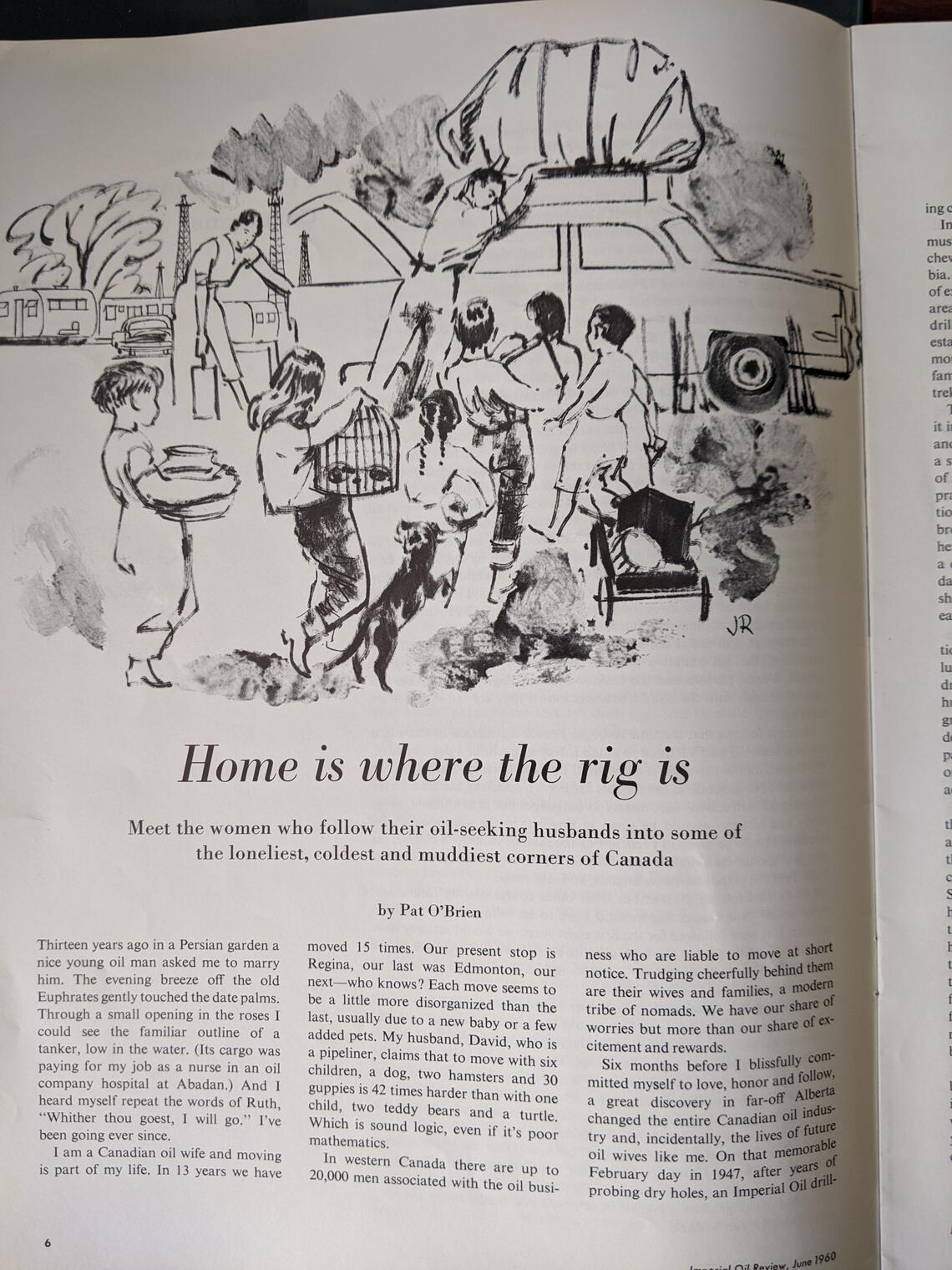
Many oil wives described their experience following their husband's job from rig to rig. Imperial Oil Review, June 1960. Canadian Energy Museum.
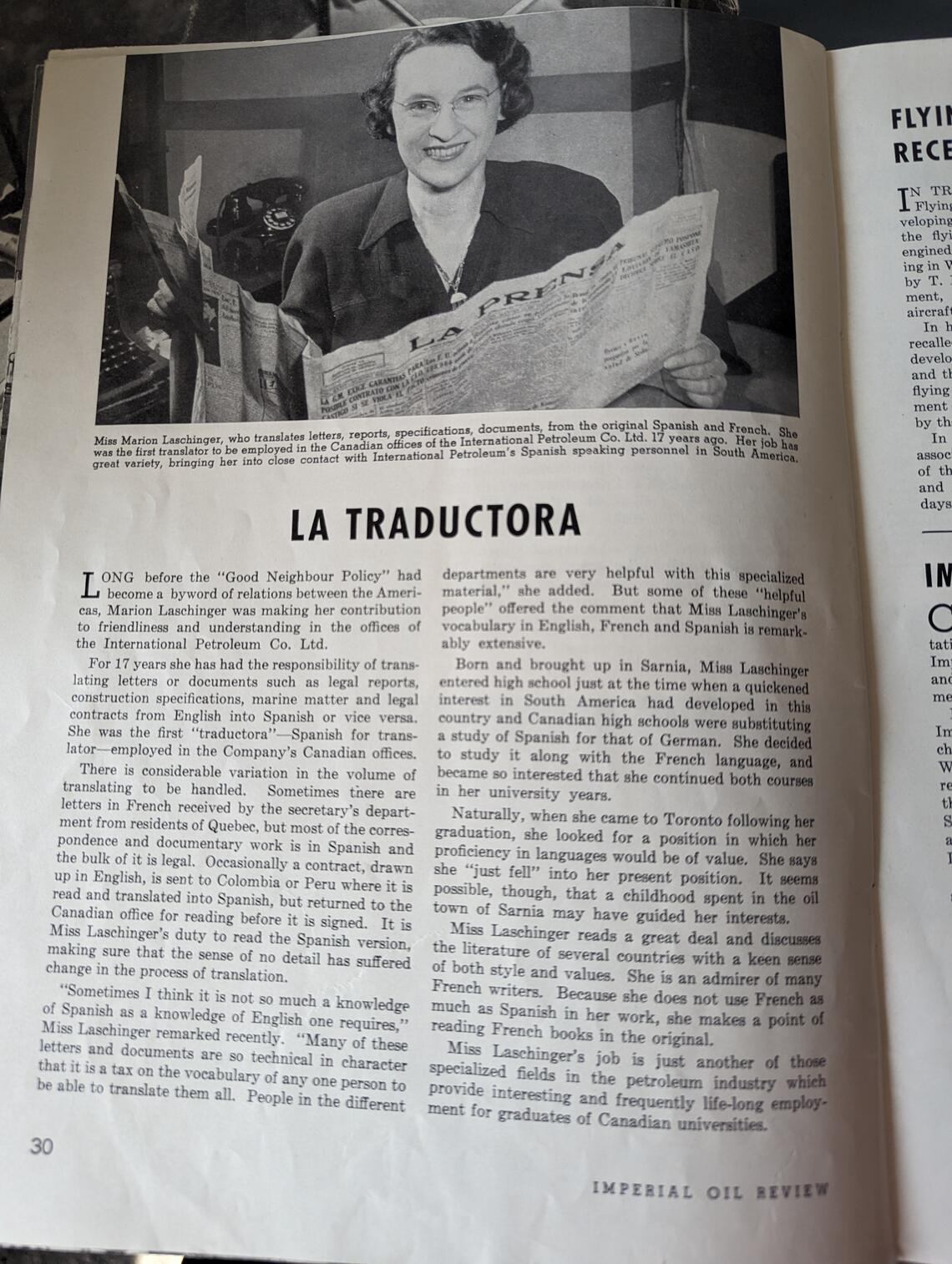
Many women were employed globally as translators by Imperial Oil. Imperial Oil Review, April 1946. Canadian Energy Museum.
Publications from the 1940s provide often contrasting views on women: from the Alberta's widely distributed The Roughneck magazine, which most often reductively portrayed young single women as fantasies for roughneck worker, to corporate publications like Imperial Oil Review, which highlighted the integration of women into the oil economy as educated employees. These dichotomous approaches were not uncommon in mid 20th century North American, where women's battles for political and economic equality often dovetailed with projects of extractive capitalism.
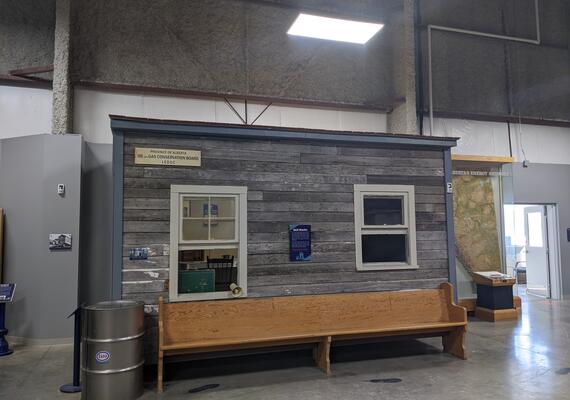
Using AR to (re)tell stories
In our collaboration with the Canadian Energy Museum (CEM), we have written up women's stories based on collected materials from the CEM archives; we have created a 3D digital scan of a skid shack - the cabin structure that housed oil families on the Leduc oil site; and we have created a an augmented reality (AR) app that has been integrated into the CEM exhibit on the Leduc find. Users are able to download the app as an accompaniment to the physical exhibit. They are not only able to walk into the skid shack, but interact with the objects in the shack, and learn about women's and families' stories through audio stories and animations.
First animation for Skid Shack AR experience, by Zahra Jafarzadeh. Sources: Canadian Energy Museum
Sample Skid Shack AR Story, written and recorded by Sabrina Perić. Sources: Canadian Energy Museum.
SkidShack AR App
In January 2024, we completed our SkidShack AR experience, created in collaboration with the Canadian Energy Museum. You can download the app by scrolling down on this page.
Through the SkidShack AR app, we provide an experience of being inside a typical 8 x 16 foot family dwelling. Through AR, you can view the building or scale it up, walk inside, take a look around, and interact with numerous objects. Click on the highlighted objects to hear and/or see oral histories derived from community resources at the Canadian Energy Museum.
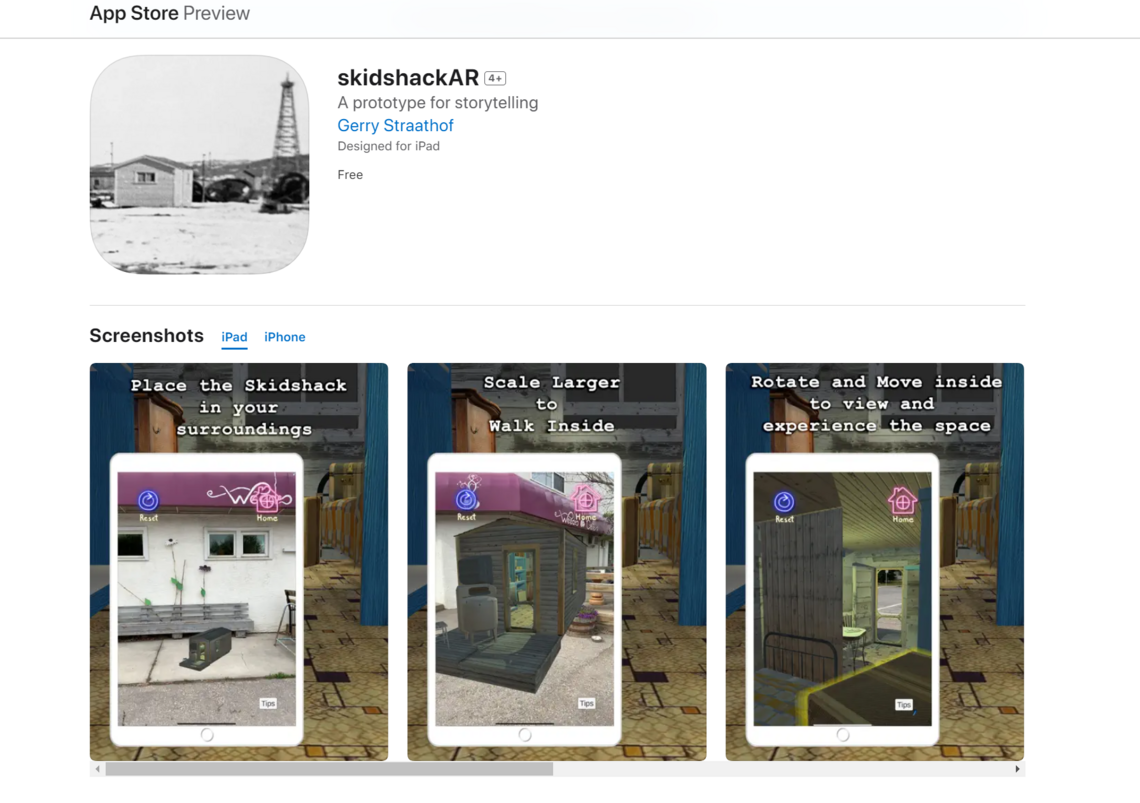
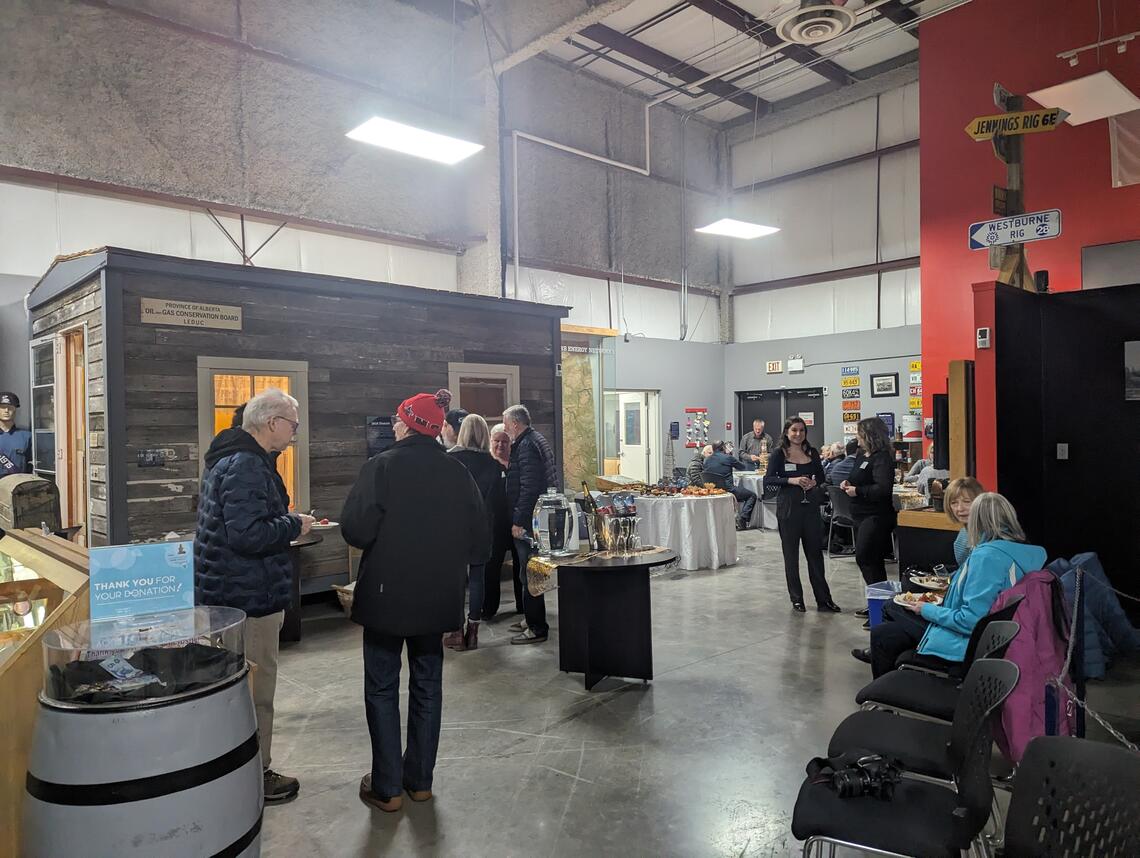
Visitors at the CEM, night of the exhibit and app launch
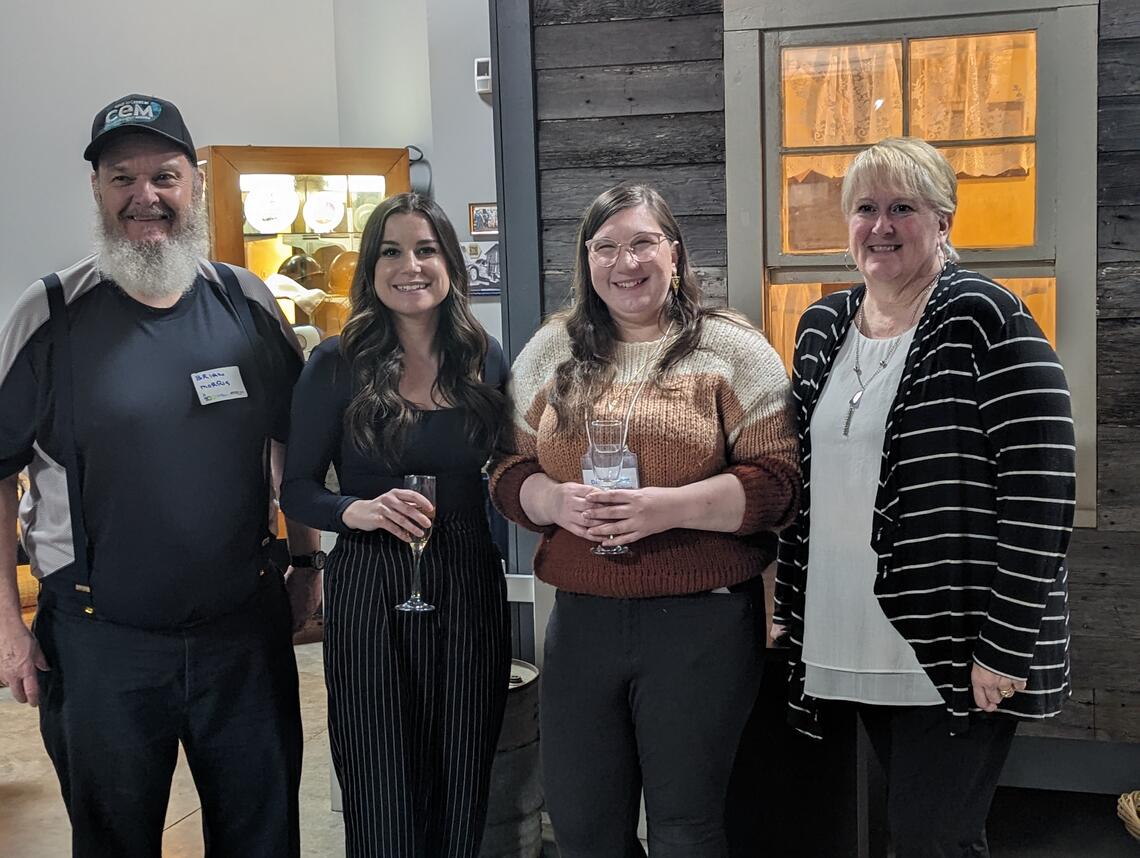
CEM Executive Director Danni Cailliau (centre left) and Collections Manager Danielle Lane (centre right) with guests
Our Oil History - Exhibit and AR app launch!
On February 13, 2024, the Canadian Energy Museum and the Energy Stories Lab launched the integrated "Our Oil History" exhibit at the CEM, and the Lab's accompanying "Skidshack AR" app, on the 77th anniversary of the Leduc find.
“We really wanted to rejuvenate the existing exhibit and use different approaches and technologies that could enhance the user's experience of the exhibition,” says Dr. Jean-René Leblanc, associate professor in the Department of Art and Art History in the Faculty of Arts and co-director of the lab. “Anybody in the world can download this app and place a three-dimensional skid shack in front of them, walk inside and experience the stories through sound, animation and narrative.”
Energy Stories Lab graduate students Zahra Jafarzadeh and Gerry Straathof played a huge role in developing the app. “Zahra was the animator and Gerry was the developer,” says Leblanc. “The app is very cutting edge. It’s an interactive version of augmented reality that has rarely been used in applications like these.”
The lab worked closely with Dr. Rebecca Dolgoy, the curator of Natural Resources and Industrial Technologies at Ingenium in Ottawa and Danielle Lane, the Canadian Energy Museum’s collections manager and keeper of its “rich archive.” The museum’s partnership with the Devon Historical Society was also invaluable in providing a series of 1940s-era oral histories and records from Imperial Oil.
The lab aims to “contribute first-hand narratives” from people who work in our energy systems. “That’s a voice we don’t hear,” says Dr. Sabrina Perić, PhD, associate professor, Department of Anthropology and Archaeology, and co-director of the Energy Stories Lab. “A lot of people talk about Alberta oil and gas workers, but we don't hear a lot from energy workers themselves, and not just oil and gas, but solar, wind, coal, nuclear.”
For more on the app launch, please click here.

